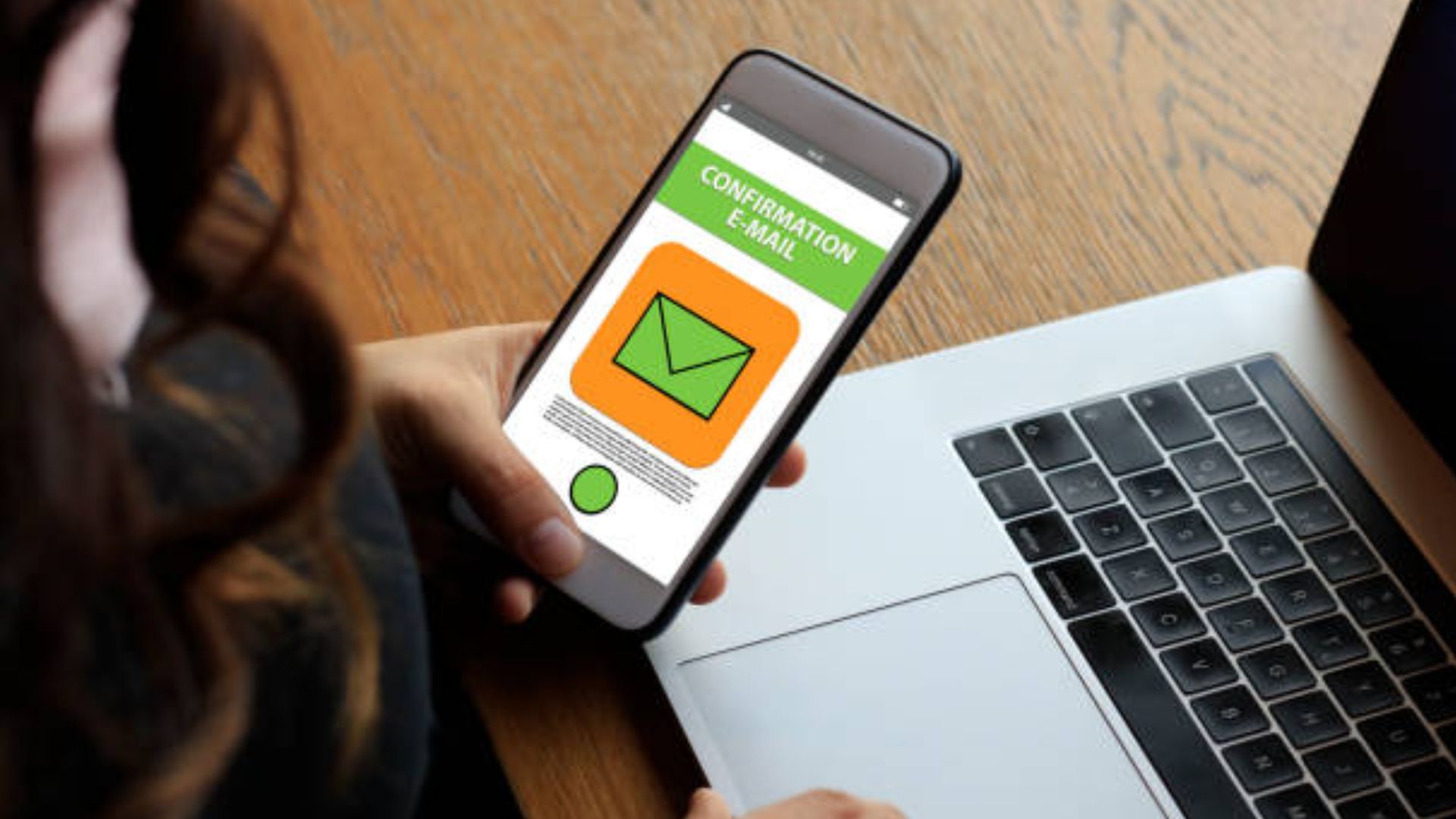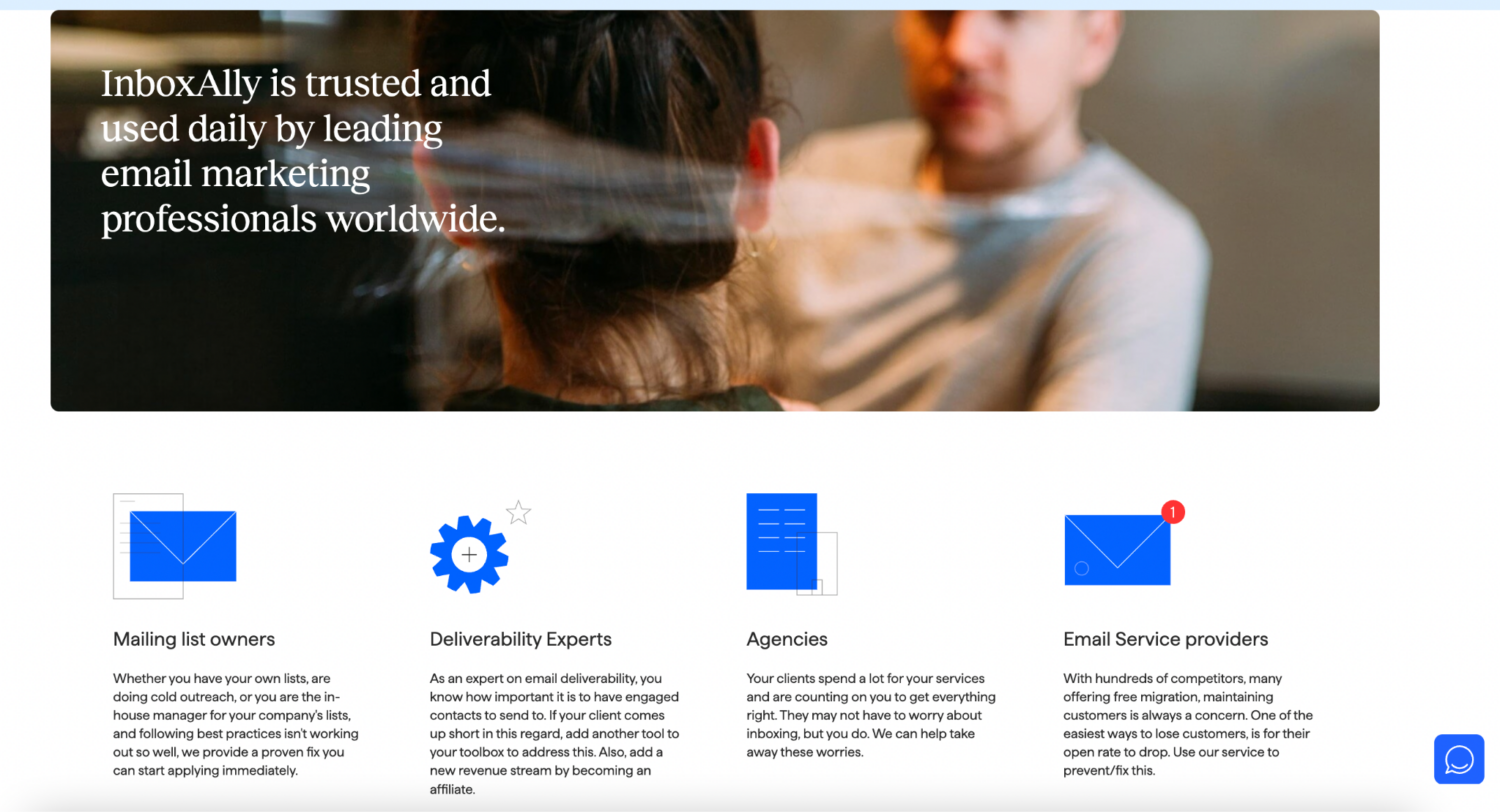O marketing por e-mail aumenta as vendas ao atingir um público amplo, mas também pode irritar os destinatários com mensagens excessivas. Neste artigo, exploraremos as diferentes vantagens e desvantagens do marketing por e-mail para que você entenda melhor seu impacto no cenário digital atual.
Examinaremos como ele ajuda as empresas a manter o envolvimento do cliente, criar fidelidade à marca e gerar conversões. Por outro lado, também abordaremos preocupações como spam, cancelamento de assinatura e a necessidade de conteúdo estratégico para evitar que você se torne incômodo.
Vamos nos aprofundar no assunto.
O que é marketing por e-mail?
O marketing por e-mail envolve a criação e o envio de mensagens para os endereços de e-mail dos destinatários para promover produtos e serviços ou estabelecer relacionamentos. Essas campanhas têm como alvo clientes potenciais e existentes, implementando estratégias eficientes de marketing por e-mail para envolver o público-alvo.
Para garantir a capacidade de entrega, os profissionais de marketing devem trabalhar de acordo com as diretrizes definidas pelos provedores de serviços de Internet. Uma estratégia eficaz de marketing por e-mail também considera as preferências do público-alvo, convertendo os destinatários em clientes pagantes.
Ao criar campanhas de e-mail, as empresas podem promover conexões, atrair novos clientes e reforçar a fidelidade da clientela existente.
Campanhas de marketing por e-mail vs. spam: a diferença
O marketing por e-mail se diferencia do spam por meio de sua abordagem bem direcionada e orientada para o valor. Embora as campanhas bem-sucedidas de marketing por e-mail tenham como objetivo envolver o público-alvo e atrair novos clientes, o spam se baseia em mensagens não solicitadas que podem irritar os clientes em potencial.
Além disso, o marketing por e-mail usa estratégias eficientes para garantir que as mensagens cheguem aos destinatários pretendidos. Essas estratégias se concentram na construção de relacionamentos e na oferta de conteúdo valioso.
Leia também: Cold Email vs Spam – As principais diferenças
Por outro lado, o spam geralmente desconsidera esses aspectos, o que o leva a ser considerado uma técnica intrusiva e ineficaz.
As desvantagens do marketing por e-mail, como problemas de capacidade de entrega e a necessidade de consentimento, superam seus benefícios quando executadas com precisão.
Diferentemente dos métodos tradicionais de marketing, as campanhas por e-mail são econômicas e permitem uma comunicação personalizada, o que as torna uma estratégia de marketing eficaz no cenário digital atual.
12 Vantagens do marketing por e-mail
![]() Fonte: UnSplash
Fonte: UnSplash
1. Direciona o tráfego para seu site
O marketing por e-mail direciona efetivamente os visitantes para o seu site. Ao incluir links nos e-mails, você incentiva os destinatários a explorar o seu site. Ao fazer isso, você também aumenta sua presença on-line e promove interações com clientes em potencial. [1]
A combinação de conteúdo atraente e links bem posicionados gera um fluxo constante de visitantes. Esse aumento de tráfego aumenta a visibilidade do seu site e fornece uma plataforma para você mostrar seus produtos e se conectar com os usuários.
2. Atua como um canal de vendas adicional
O marketing por e-mail complementa seus métodos de vendas regulares, dando a você mais chances de mostrar seus produtos às pessoas. Pense nisso como uma maneira extra de aumentar as vendas. É como ter outra loja onde você pode exibir seus produtos aos clientes.
Ao elaborar cuidadosamente seus e-mails, você pode mostrar o que está vendendo e incentivar as pessoas a comprar. Esse método extra de vendas também ajuda você a alcançar mais clientes e ganhar mais dinheiro.
Ao usá-lo com seus outros métodos de vendas, como ter uma loja física ou vender on-line, você cria um plano de vendas geral mais forte. Dessa forma, você se conecta melhor com os clientes e gera mais vendas.
3. Oferece um alto retorno sobre o investimento
Quando você usa o marketing por e-mail, seu dinheiro e esforço podem retornar rapidamente. Isso é chamado de “retorno sobre o investimento”, ou ROI, para abreviar. Em termos simples, você obtém mais do que investiu.
Em um estudo realizado em 2023, para cada dólar investido em marketing por e-mail, os profissionais de marketing geram incríveis US$ 42, resultando em um ROI impressionante de 4.200%. [2]
O marketing por e-mail não requer muito dinheiro, mas pode trazer a você mais clientes e vendas. É mais provável que eles se interessem porque você envia e-mails personalizados para as pessoas certas.
Isso também significa que você gasta menos para atingir o público certo.
Quando as pessoas interessadas compram de você, o dinheiro que você ganha pode ser muito maior do que o gasto com o envio de e-mails.
Para os profissionais de marketing que desejam refinar suas estratégias e obter resultados semelhantes, explorar os blogs de marketing por e-mail pode oferecer insights e dicas valiosos.
4. Gerenciável e facilmente rastreável

Depois de enviar e-mails, é essencial que você veja o que acontece em seguida. Você pode descobrir quem abriu os e-mails, suas taxas de cliques e muito mais. Esses dados ajudam você a saber se as pessoas estão interessadas no que você está compartilhando. [3]
O uso de ferramentas para marketing por e-mail também facilita o manuseio de tudo. Você pode planejar quando enviar e-mails, criá-los rapidamente e até mesmo configurá-los para serem enviados automaticamente.
Observar os números também ajuda você a descobrir o que é prático. Você pode se concentrar em coisas semelhantes mais tarde se mais pessoas clicarem em um link específico. É como um mapa que orienta você para o sucesso em seus esforços de marketing por e-mail.
Por fim, o rastreamento é vital para que você faça escolhas inteligentes com base em informações factuais. Isso ajuda você a economizar dinheiro e a tomar melhores decisões de negócios.
5. Custo-benefício
Comparado a outras estratégias de marketing, o marketing por e-mail é econômico. Além disso, ele cria o reconhecimento da marca e aprimora a comunicação comercial.
Ao contrário de outras táticas de marketing, os e-mails geralmente são entregues aos destinatários. Isso evita o custo da publicidade paga por clique e o incômodo de mensagens indesejadas que podem vir com anúncios pagos.
O uso do marketing por e-mail também permite que você alcance clientes internacionais sem esforço e sem altos custos. É uma estratégia eficiente que visa diretamente ao seu público. Com uma campanha de marketing por e-mail bem planejada, você pode economizar dinheiro e, ao mesmo tempo, conectar-se efetivamente com seu público.
6. Melhor do que o correio postal
Em comparação com o correio tradicional, o marketing por e-mail agiliza o crescimento dos negócios. É rápido e menos dispendioso, permitindo que você planeje campanhas futuras e forneça prontamente informações relacionadas à marca. A natureza imediata das mensagens de e-mail envolve os destinatários genuinamente interessados, promovendo a geração de leads.
Além disso, a capacidade de compartilhamento do e-mail amplia seu alcance, promovendo seu conteúdo para além do público original. Isso também torna o marketing por e-mail uma ferramenta moderna e eficaz que supera as limitações do correio tradicional, impulsionando o sucesso dos negócios.
Leia também: E-mail Marketing x Mala Direta
7. Acesso a modelos de e-mail personalizados
A elaboração de uma campanha de marketing por e-mail bem-sucedida requer planejamento estratégico. Com as campanhas de e-mail, você tem acesso a modelos projetados profissionalmente, o que ajuda a criar mensagens envolventes.
Esses modelos simplificam o processo de criação de conteúdo visualmente atraente e coerente. Eles também garantem uma imagem de marca consistente em todos os e-mails, promovendo o reconhecimento da marca.
Além disso, o uso de modelos personalizados aumenta a eficiência de sua estratégia de marketing por e-mail. Você pode adaptar o conteúdo ao seu público, enquanto o modelo cuida dos elementos de design. Com esse recurso, você economiza tempo e maximiza o impacto de suas mensagens de marketing.
Em última análise, o uso de modelos personalizados melhora a eficácia de suas campanhas de e-mail. Como resultado, isso contribui para um melhor envolvimento e taxas de sucesso mais altas.
8. Os clientes verificam seus e-mails todos os dias

Ao planejar uma campanha de e-mail, considere que as pessoas verificam seus e-mails diariamente. Esse hábito consistente oferece uma oportunidade valiosa para as empresas se conectarem com seu público.
Dada a frequência dos telefones celulares, os e-mails podem ser acessados em qualquer lugar. Essa conveniência também enfatiza ainda mais a importância de você criar um conteúdo de e-mail envolvente. Campanhas de e-mail eficazes aproveitam essa interação diária, oferecendo informações relevantes e atraentes.
O desenvolvimento de uma estratégia eficiente de marketing por e-mail que se alinhe à rotina diária do seu público pode aumentar as taxas de envolvimento.
9. Ajuda você a comercializar com um toque pessoal
As campanhas de e-mail permitem que você colete dados sobre seus assinantes, ajudando-o a segmentar seu público com base nas preferências. Essa segmentação permite que você envie conteúdo relevante para diferentes grupos. É provável que você também chame a atenção deles e estimule a ação, abordando suas necessidades e interesses.
Além disso, a personalização vai além do uso de seus nomes; trata-se de entender o que é importante para eles. A elaboração de um e-mail que fale diretamente com as preocupações e os desejos deles fortalece o relacionamento que você tem com seus assinantes.
Leia também: E-mail frio personalizado: uma lista das melhores práticas que funcionam em 2023
Essa abordagem aumenta o engajamento e as conversões, pois é mais provável que as pessoas respondam positivamente a mensagens que atendam às suas necessidades.
Por fim, uma estratégia de marketing personalizada aumenta a eficácia de suas campanhas de e-mail, promovendo uma conexão mais profunda com seu público.
10. Fortalece o relacionamento com seus consumidores e leitores
Criar relacionamentos confiáveis é essencial para o sucesso a longo prazo. Você estabelece uma conexão consistente quando se comunica com seus clientes regularmente por meio de campanhas de e-mail.
Ao compartilhar informações valiosas, dicas e atualizações, você demonstra seu compromisso com o bem-estar deles. No entanto, esse envolvimento vai além da promoção de produtos – trata-se de fornecer valor real. Os clientes apreciam empresas que se preocupam com suas necessidades.
Além disso, os e-mails permitem que você obtenha feedback e insights diretamente de seus clientes. Essa comunicação bidirecional cria um senso de parceria e compreensão mútua. Ao responder às preocupações e preferências, você também demonstra que as opiniões deles são importantes.
11. Favorável à automação
O gerenciamento manual de campanhas de e-mail pode consumir muito tempo, mas a automação simplifica o processo. As ferramentas de automação permitem que você programe e-mails com antecedência, garantindo a entrega oportuna sem supervisão constante. [4]
Ações específicas podem acionar e-mails automatizados, como a inscrição ou a compra de um cliente. Portanto, esse toque personalizado aumenta o envolvimento do cliente. A automação também permite que você segmente seu público e envie conteúdo personalizado com base no comportamento e nas preferências dele.
Além disso, a automação permite que você acompanhe como os destinatários interagem com seus e-mails, fornecendo insights para aprimorar sua estratégia.
12. Aumenta o conhecimento da marca
Em um mercado competitivo, destacar-se é fundamental. As campanhas de e-mail oferecem uma maneira consistente e direcionada de mostrar sua marca. Você comunica os valores, a missão e as ofertas da sua marca por meio de e-mails cuidadosamente elaborados.
A consistência nos elementos da marca, como cores e logotipos, reforça o reconhecimento. A cada e-mail recebido, a identidade da sua marca fica mais enraizada na mente dos destinatários.
Além disso, o envolvimento consistente por meio do marketing por e-mail mantém sua marca viva na consciência dos clientes.
Eles provavelmente se lembrarão e confiarão na sua marca quando receberem conteúdo relevante e valioso de forma consistente. Essa confiança é vital para atrair e reter clientes.
Além disso, os clientes satisfeitos que recebem comunicação regular e de qualidade têm maior probabilidade de indicar sua marca para outras pessoas. Essa indicação boca a boca aumenta ainda mais o conhecimento da marca.
10 Desvantagens do marketing por e-mail

1. Requer um grande público para converter vendas significativas
No marketing por e-mail, é essencial que você entenda a relação entre o tamanho do público e as taxas de conversão. Embora ter uma lista de e-mails extensa seja valioso, ela só garante automaticamente altas conversões de vendas.
No entanto, um público maior não se traduz necessariamente em melhores resultados. Portanto, é fundamental que você se concentre em um público-alvo específico. O envio de e-mails para pessoas genuinamente interessadas em seu conteúdo ou produtos aumenta a probabilidade de conversões.
Como diz o ditado, o importante é a qualidade em vez da quantidade. Adapte o seu conteúdo para que ele seja relevante para o seu público específico, atendendo às necessidades e preferências dele.
2. Os erros de digitação podem fazer com que você pareça menos inteligente
Erros de digitação e outros erros gramaticais podem prejudicar seu profissionalismo e credibilidade. Um único erro também pode fazer com que sua marca pareça menos inteligente. Portanto, a revisão e a edição regulares são essenciais para que você mantenha uma imagem refinada.
3. Desafios da capacidade de entrega
A navegação no marketing por e-mail inclui a compreensão dos desafios de capacidade de entrega que podem afetar a eficácia da sua campanha. Os e-mails podem não chegar aos destinatários devido a filtros de spam, falhas técnicas ou outros fatores.
Portanto, adote as práticas recomendadas para superar esses desafios. Por exemplo, evite linguagem de spam e limpe regularmente sua lista de e-mails para remover endereços inativos ou inválidos. [5]
Além disso, teste seus e-mails em várias plataformas e dispositivos para garantir uma entrega consistente. O monitoramento das taxas de capacidade de entrega e das métricas de engajamento também fornece insights sobre a saúde da sua campanha.
Garantir que seus e-mails cheguem às caixas de entrada dos destinatários é vital para o sucesso do marketing por e-mail. Você pode fazer isso usando uma ferramenta de capacidade de entrega como Caixa de entradaAlly.
O InboxAlly remodela a reputação de seu remetente usando e-mails semente exclusivos e técnicas inteligentes de envolvimento. Ele também garante que os provedores de caixa de entrada reconheçam seus e-mails como conteúdo valioso, reduzindo significativamente as chances de eles acabarem em pastas de spam.
Por meio de interações positivas consistentes e taxas de envolvimento aprimoradas, a abordagem do InboxAlly orienta seus e-mails para a caixa de entrada principal, resultando em taxas de abertura e de cliques mais altas.
4. Superando a fadiga do e-mail
Quando os assinantes recebem muitos e-mails, eles se desinteressam ou optam por sair da sua lista. Portanto, é essencial equilibrar o equilíbrio entre manter contato e sobrecarregar seu público.
Para combater a fadiga dos e-mails, concentre-se em fornecer valor em cada mensagem. Envie e-mails com conteúdo relevante e valioso que se identifique com os interesses do seu público.
Além disso, segmente sua lista para adaptar o conteúdo com base nas preferências do assinante. Permita que os assinantes escolham a frequência dos e-mails para se manterem envolvidos sem se sentirem sobrecarregados.
5. Preocupações com a privacidade
À medida que as pessoas se tornam mais reservadas, é fundamental equilibrar a personalização e o respeito à privacidade dos assinantes. Para abordar as preocupações com a privacidade de forma eficaz, seja transparente sobre as práticas de uso e armazenamento de dados em sua política de privacidade.
Além disso, solicite o consentimento explícito antes de enviar e-mails de marketing e forneça uma maneira fácil para os assinantes optarem por não participar. A implementação de medidas sólidas de segurança de dados protege as informações confidenciais.
Por fim, personalize seu conteúdo respeitando as opções de privacidade dos assinantes. Evite a personalização excessivamente intrusiva e garanta que seus e-mails ofereçam um valor claro.
6. Limitações do projeto
O design de e-mail varia entre plataformas e dispositivos, o que torna essencial a criação de e-mails visualmente atraentes e responsivos.
Para superar os desafios de design, priorize os princípios de design responsivo. Em seguida, crie e-mails que se adaptem perfeitamente a diferentes tamanhos de tela e clientes de e-mail. Por fim, use um layout limpo, conteúdo conciso e recursos visuais atraentes para transmitir sua mensagem com eficiência.
Use modelos pré-testados para simplificar o processo de design e garantir a consistência da marca. Teste regularmente os e-mails em vários dispositivos e plataformas para identificar as diferenças de design e fazer os ajustes necessários.
7. Alta concorrência

Com as caixas de entrada lotadas, seus e-mails precisam captar a atenção dos destinatários rapidamente. Para resolver isso, concentre-se em criar linhas de assunto atraentes. Uma linha de assunto concisa e intrigante desperta a curiosidade e incentiva os destinatários a abrir seus e-mails.
Além disso, crie conteúdo relevante que se identifique com os interesses de seu público. Personalize seus e-mails com base nas preferências e comportamentos dos assinantes. O conteúdo sob medida tem mais chances de se destacar em uma caixa de entrada lotada.
Por fim, faça experimentos com testes A/B para identificar os formatos e as estratégias de conteúdo que dão os melhores resultados.
8. As listas de e-mail podem se deteriorar com o tempo
Com o tempo, as listas de e-mail podem ficar desatualizadas, pois os assinantes mudam de endereço de e-mail ou perdem o interesse.
Para gerenciar com eficiência as listas de e-mail em decadência, faça a manutenção regular da lista. Em seguida, remova os assinantes inativos ou não engajados para garantir um público de alta qualidade e engajado. Incentive também os assinantes a atualizarem suas preferências e informações de contato.
Implemente estratégias para reengajar assinantes inativos, como campanhas de reengajamento direcionadas. Segmente sua lista com base nos níveis de envolvimento para personalizar o conteúdo e reacender o interesse.
Por fim, monitore regularmente as métricas de desempenho da sua lista, como taxas de abertura e de cliques, para avaliar a saúde dela.
9. Questões técnicas
Links quebrados, problemas de formatação ou imagens podem afetar a eficácia da sua campanha. Testes rigorosos antes do envio garantem uma experiência sem falhas para os destinatários.
Verificações e testes regulares de qualidade em vários dispositivos e plataformas mantêm uma apresentação refinada. Assegure-se de que os e-mails funcionem como pretendido para priorizar a experiência do usuário.
10. Interação limitada
Embora os destinatários possam clicar em links e responder, não há o imediatismo do bate-papo ao vivo ou da mídia social. Portanto, use conteúdo envolvente e frases de chamariz claras para incentivar a interação. Combine elementos interativos, como enquetes ou pesquisas, para aumentar o envolvimento.
Além disso, combine o marketing por e-mail com outros canais, como a mídia social. Embora o e-mail forneça conteúdo com eficiência, a criação de conversas em tempo real requer canais adicionais.
Concluindo

O marketing por e-mail oferece um meio poderoso de se conectar com seu público, direcionar tráfego e promover relacionamentos com clientes. Sua abordagem direcionada, a relação custo-benefício e os recursos de automação aprimoram as estratégias de marketing.
No entanto, ela traz desafios como preocupações com privacidade, concorrência e limitações de design. Portanto, o reconhecimento de suas vantagens e desvantagens é essencial para uma implementação eficaz.
Ao aproveitar seus pontos fortes e abordar suas limitações, o marketing por e-mail pode ser uma ferramenta poderosa para estimular o envolvimento, as conversões e o crescimento dos negócios no mundo atual.
Referências:
[1] https://www.markettailor.io/blog/how-to-use-email-marketing-to-drive-website-traffic
[2] https://www.luisazhou.com/blog/email-marketing-roi-statistics/#:~:
[3] https://www.forbes.com/advisor/business/software/best-email-marketing-software/
